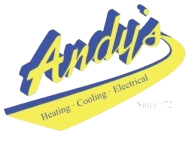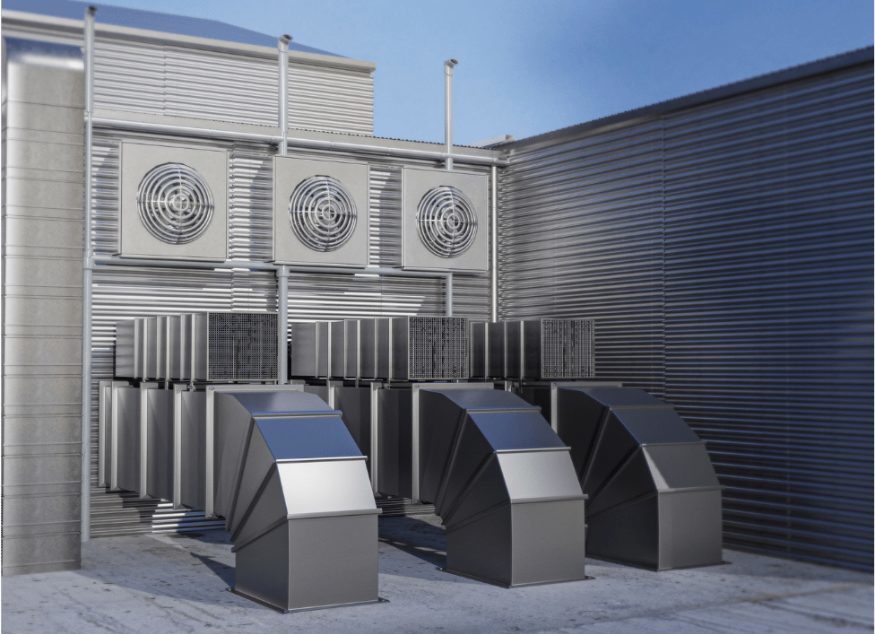Table of Contents
Maintaining commercial HVAC systems is a critical aspect of ensuring they operate efficiently and effectively. With the right attention to preventive maintenance, technological advancements, and compliance with regulatory standards, businesses can achieve optimal performance from their HVAC units. This approach saves on energy costs and contributes to a healthier environment by enhancing indoor air quality.
Regular Commercial HVAC Service
Regular preventative maintenance is essential for keeping commercial HVAC systems at peak performance. Scheduling these appointments twice a year allows for thorough inspections that can identify and address potential issues before they escalate. A primary task in this regimen includes the cleaning and inspection of coils and ductwork. When coils are clean, they ensure efficient heat transfer, which bolsters the system’s efficiency and reduces energy consumption.
Checking and replacing air filters regularly is critical. Clean air filters support optimal airflow, significantly impacting energy efficiency and indoor air quality. Ensuring filters are free from dirt and debris helps the entire system function smoothly, avoiding unnecessary strain on its components.
The calibration of system controls and thermostats is another facet of preventive maintenance that shouldn’t be overlooked. Proper calibration ensures the system operates according to the set specifications, delivering comfort while maximizing energy savings. This precise operation prevents the overuse of energy, contributing to cost-savings in utility bills.
Lubricating moving parts is vital in maintaining an HVAC system’s efficiency. It reduces friction in motors and bearings, decreasing electricity use and prolonging the unit’s lifespan. Scheduled maintenance offers an opportunity for HVAC professionals to conduct these lubrications diligently.
Inspecting electrical connections forms part of the essential maintenance checklist. Tightening connections and addressing any issues with wires or terminals prevent potential safety hazards and system failures. It also assures the longevity of the equipment by preventing intermittent operation that can cause wear.
Refrigerant levels significantly affect the HVAC system’s performance. Ensuring the refrigerant is adequately charged improves efficiency and avoids damage to the compressor, which can be costly to repair.
Verifying and clearing the condensate drain line is paramount in air conditioning systems where water accumulation can occur. A clear drain line prevents water damage and improves humidity control, contributing to a comfortable and safe indoor environment.
Conducting commercial HVAC service supports energy conservation efforts. Well-maintained HVAC systems consume less fuel, contributing to lower carbon emissions. It’s an effective way to ensure environmentally friendly operations, making preventive maintenance a financially sound and responsible decision.
By prioritizing rigorous preventive maintenance schedules, businesses can enjoy uninterrupted comfort, reduced operating costs, and a longer lifespan for their HVAC systems.
Technological Integration in Commercial HVAC Service
Smart technologies are transforming commercial HVAC service, bringing about efficiencies and effectiveness. Technologies such as IoT (Internet of Things) sensors, predictive maintenance, and Computerized Maintenance Management Systems (CMMS) stand at the forefront of this revolution. These innovations bolster system performance, reduce downtime, and encourage a shift towards proactive maintenance strategies.
IoT sensors monitor everything from temperature and humidity levels to airflow and system efficiency in real-time. This continuous stream of data allows for immediate detection of anomalies, long before they escalate into major problems. If a sensor notices that the system is working harder than usual to maintain the same level of comfort, it might signal that a filter needs changing or a part needs lubrication.
Predictive maintenance takes this data-driven approach a step further. By analyzing the data collected by IoT sensors, predictive maintenance software uses algorithms to predict when a component might fail or when maintenance is needed. Traditionally, maintenance schedules were based on manufacturer recommendations or past experiences, which don’t always accurately reflect the current state of the system. Predictive maintenance ensures that each part is serviced exactly when needed, preventing unnecessary downtime and extending the lifespan of the HVAC system.
CMMS plays a crucial role in orchestrating these technological advancements into a cohesive maintenance strategy. Acting as the central nervous system of maintenance operations, CMMS organizes, tracks, and manages all maintenance activities. It notifies the maintenance team of upcoming predictive maintenance tasks, logs every service action taken, and keeps a history of all repairs and replacements.
The integration of these technologies into commercial HVAC maintenance supports an eco-friendly approach to system management. By ensuring that systems operate at peak efficiency, energy waste is minimized. This reduces operational costs and lessens the environmental impact, aligning with global efforts to combat climate change.
Smart technologies are redefining the landscape of commercial HVAC maintenance, shifting paradigms from reactive to proactive maintenance philosophies. IoT sensors allow for real-time monitoring, predictive maintenance predicts potential failures, and CMMS streamlines the entire maintenance process—collectively contributing to reduced downtime, improved system performance, and longer system longevity.
Navigating Regulatory Compliance
Navigating the maze of regulatory compliance for commercial HVAC systems is more than a duty; it’s a strategic step towards sustainability and efficiency. Understanding, adhering to, and staying ahead of these regulations ensures legal compliance and unlocks the door to operational excellence and environmental stewardship. Regulations often set the bar high for energy efficiency and environmental protection, reflecting society’s expectations for businesses to operate responsibly.
These regulations aim to reduce greenhouse gas emissions, improve indoor air quality, and ensure overall system safety. These goals align with global efforts to combat climate change and safeguard public health. To meet these standards, commercial HVAC maintenance practices have evolved, becoming more sophisticated and integral to business operations.
One of the primary ways regulations influence maintenance practices is through the requirement for regular system audits and efficiency assessments. These evaluations help identify areas where energy is being wasted and pinpoint opportunities for upgrades or improvements. By adhering to these regulations, businesses can significantly lower their energy consumption, reducing their carbon footprint and energy bills simultaneously.
Regulatory compliance often mandates the use of specific technologies or practices designed to improve air quality. For example, regulations may require the installation of advanced filtration systems that capture finer particles, or the use of eco-friendly refrigerants that have a lower global warming potential. Maintenance strategies that keep these systems in optimal condition become critical, ensuring that the air within commercial spaces remains clean and safe for occupants.
Ensuring safety is another pivotal aspect of regulatory compliance. This includes regular checks on electrical connections, securing components to avoid leaks of harmful substances, and making sure that ventilation is adequate to prevent the build-up of noxious fumes. Compliance with these aspects during maintenance checks is essential to prevent accidents, avoid penalties, and safeguard the wellbeing of every individual who enters the business premises.
To navigate the complexity of these regulations, businesses often turn to documented maintenance plans that outline every required action. By keeping detailed records of all maintenance activities, businesses can provide evidence of their compliance efforts. This proves their commitment to regulatory obligations and positions them as responsible members of the business community.
While navigating regulatory compliance in commercial HVAC maintenance may seem daunting, it opens a pathway to efficiency and sustainability. Adherence to these regulations through rigorous maintenance strategies benefits the bottom line by reducing operational costs and contributes to a healthier planet and safer commercial spaces. Engaging in regular maintenance activities ensures that commercial HVAC systems meet or exceed the latest energy efficiency and environmental standards, demonstrating a commitment to quality, safety, and environmental stewardship.
The cornerstone of achieving an efficient, sustainable, and compliant commercial HVAC system lies in rigorous preventive maintenance complemented by smart technology integration. This strategy extends the lifespan of these systems and plays a significant role in energy conservation and environmental protection. By focusing on regular care and embracing technological innovations, businesses can ensure their HVAC systems meet the highest standards of efficiency and sustainability.
Contact Us To Schedule Your Commercial HVAC Service Today!
Don’t wait until problems arise. Take proactive steps to maintain the efficiency and reliability of your commercial HVAC systems. Call Andy’s Heating and Cooling now to book your service appointment and ensure uninterrupted comfort for your business.

